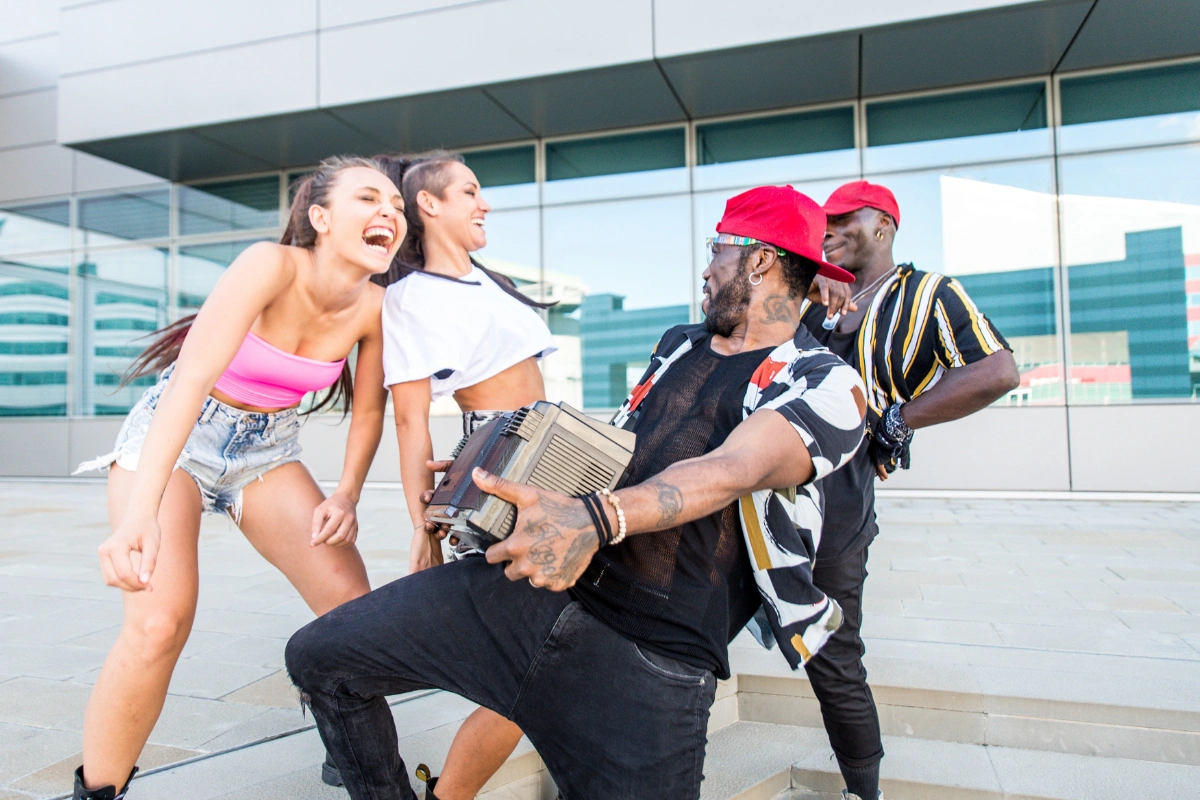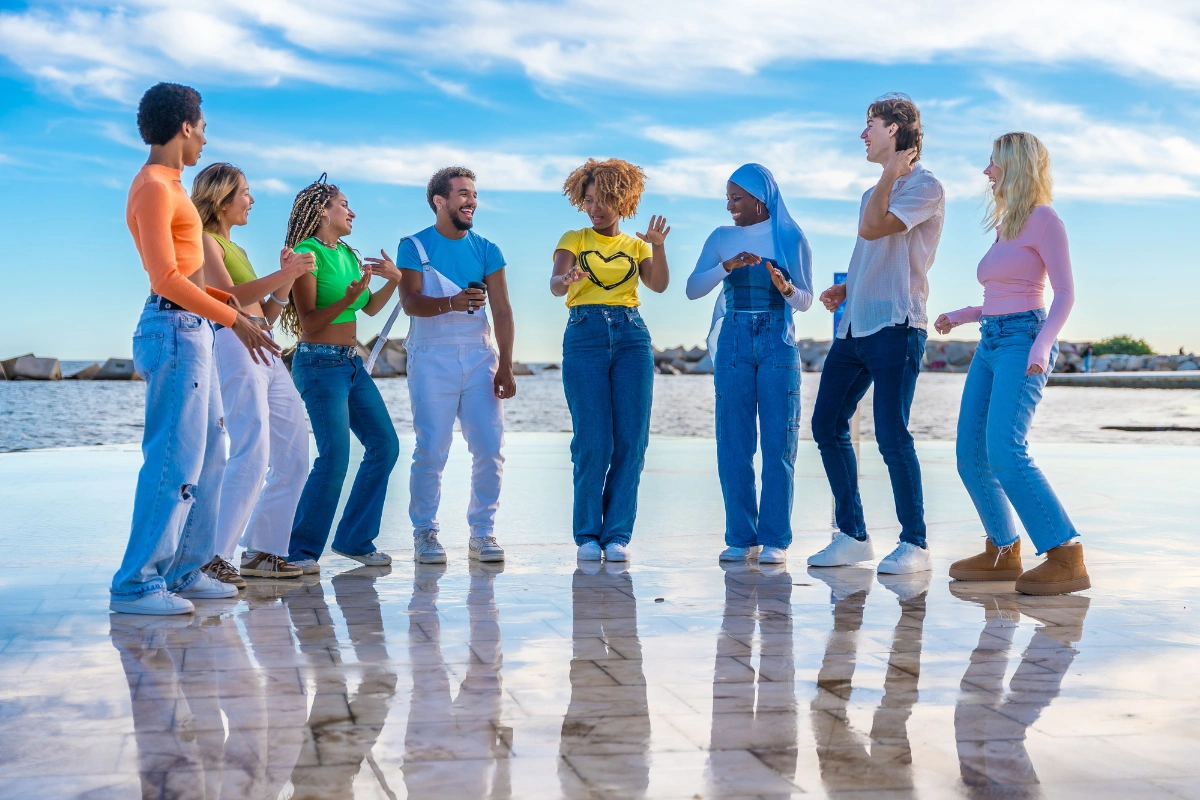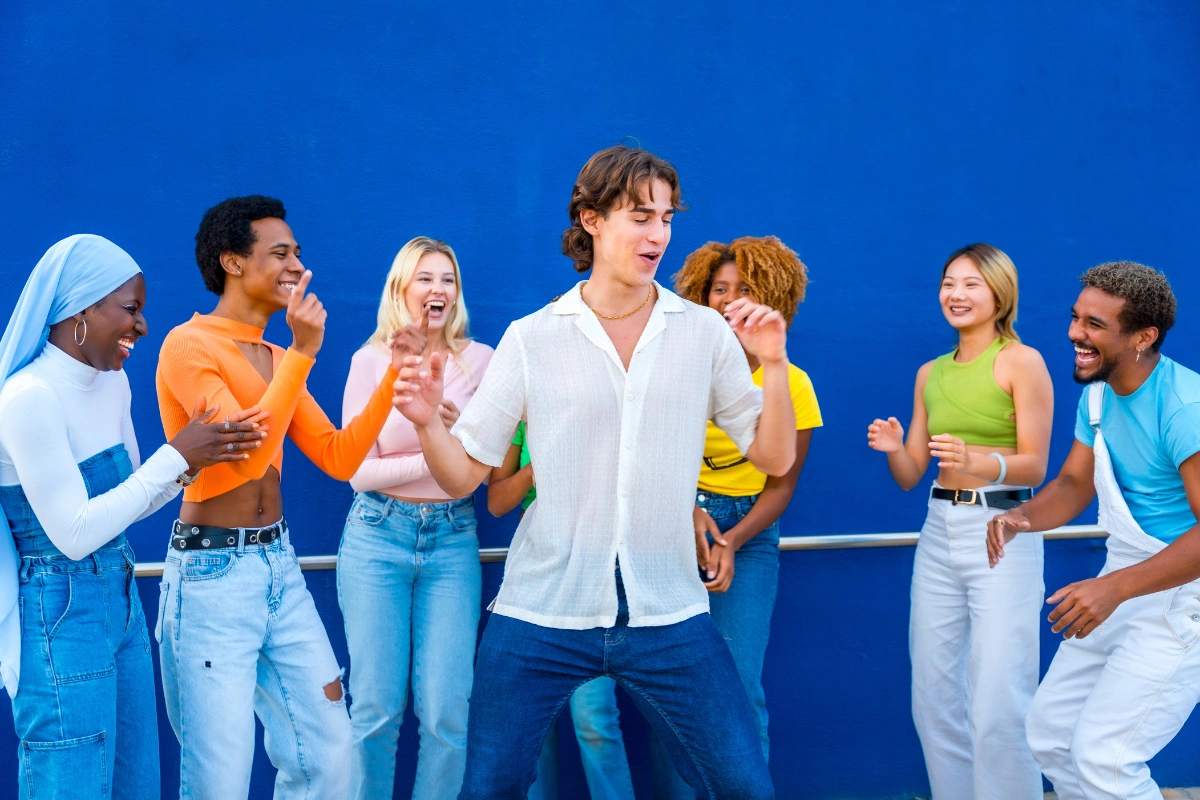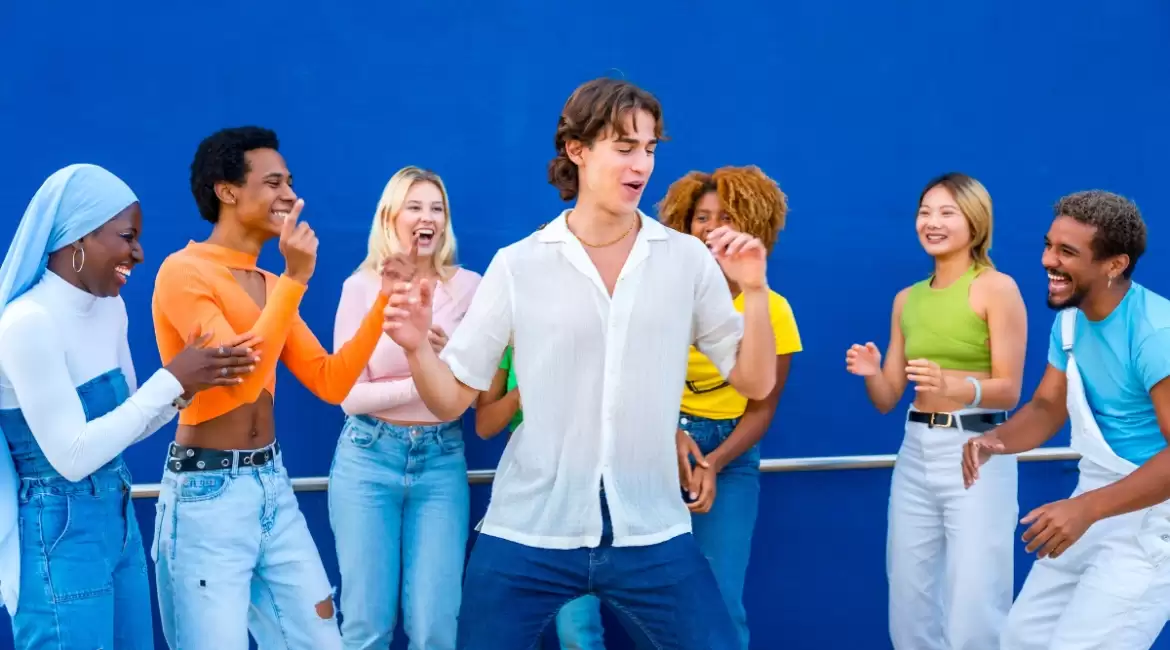Stepping into the electrifying atmosphere of a freestyle jam is akin to entering a portal to a world where rhythm reigns supreme and creativity knows no bounds. A freestyle jam is more than just a gathering of dancers; it’s a vibrant celebration of movement, music, and community—a space where individuals come together to showcase their skills, exchange ideas, and forge lasting connections. In this introductory guide, we’ll delve into the intricacies of the freestyle jam, exploring everything from its cultural significance to its unique rituals and customs. Whether you’re a seasoned veteran or a newcomer eager to dive into the world of freestyle dance, this comprehensive overview will provide you with the insights and knowledge you need to navigate the exhilarating landscape of the freestyle jam with confidence and enthusiasm. So, let’s embark on this exhilarating journey together and uncover the magic that awaits within the pulsating heart of the freestyle jam.
How Freestyle Battles Started
The genesis of freestyle battles can be traced back to the vibrant urban culture of the 1970s, where individuals found themselves engaged in intense dance-offs as a means of expression, validation, and belonging within their respective communities.
Dance, during this era, emerged as more than just a recreational activity; it became a lifeline for many. In the bustling streets of New York City, where tensions often ran high, battling provided an outlet for resolving conflicts without resorting to the violence and territorialism synonymous with gang culture.
Unlike other forms of dance, such as ballet or belly dance, which typically lack a competitive edge, street dance inherently incorporates the element of face-to-face confrontation. This aspect of direct competition became ingrained in the fabric of street dance culture, evolving into what we now recognize as freestyle battles.
The proliferation of battle culture reached its zenith during the 1970s and 1980s, buoyed by the influence of seminal films like “Beat Street,” “Wild Style,” and “Breakin’,” which thrust street dance and its accompanying battle ethos into the mainstream spotlight.
Subsequent cinematic endeavors, notably “You Got Served” and “Stomp The Yard,” further cemented the association between street dance and competitive battling, perpetuating the narrative of conflict, resolution, and triumph that resonates with audiences and filmmakers alike.

The Structures Of Battles
In the intricate world of freestyle battles, the structural framework that governs the flow of competition is meticulously crafted to accommodate the diverse array of participants while maintaining a sense of fairness and excitement throughout the event.
At the heart of these battles lies a tournament-style format, characterized by rounds organized within brackets. However, the logistics of such tournaments often necessitate the implementation of a preliminary round, particularly when the number of registered dancers exceeds the available slots in the main event.
During these preliminary rounds, each dancer is given the opportunity to showcase their freestyle prowess before a panel of judges, who are tasked with the arduous responsibility of selecting the top performers to advance to the subsequent stages of the competition. Typically, the top 16 dancers are chosen from the prelims, thus earning their coveted positions in the main battle rounds.
Once the preliminary selection process is complete, the battle rounds commence, with dancers or groups thereof taking turns to grace the dance floor with their electrifying moves. Each dancer is allotted a brief yet exhilarating window of opportunity, typically spanning from 30 seconds to a minute, to captivate the audience and impress the discerning eyes of the judging panel.
Following each dancer’s performance, the judges deliberate and deliberate, meticulously evaluating the technical proficiency, creativity, and stage presence exhibited by each contestant. Their verdict is communicated through subtle yet decisive gestures, as they point or gesture towards the dancer deemed worthy of claiming victory in the round.
As the competition unfolds, the victorious dancers ascend the brackets, advancing to face off against their counterparts from different rounds in a relentless pursuit of glory and recognition. This iterative process of elimination and progression imbues the battles with an aura of suspense and anticipation, culminating in the crowning of a worthy champion.
In response to the evolving landscape of freestyle culture, organizers are continuously exploring innovative approaches to seeding battles, particularly in regions like Europe and Asia where the sheer volume of participants necessitates alternative methodologies. One such adaptation involves dividing participants into smaller groups, wherein each group undergoes its own preliminary round overseen by a designated judge. Those who emerge triumphant from these preliminary skirmishes then proceed to join forces with their fellow victors in the ultimate battle for supremacy, thus ensuring that the spirit of competition remains vibrant and inclusive amidst the ever-expanding freestyle community.

Solo battles and team battles
Solo battles and team battles represent two distinct yet equally exhilarating facets of the freestyle dance scene, each offering its own unique dynamics and opportunities for artistic expression.
In the realm of solo battles, individual dancers step onto the stage to engage in electrifying face-offs against their peers. In these intense 1 versus 1 showdowns, the spotlight shines solely on the skills, creativity, and charisma of each dancer as they strive to outshine their opponents and claim victory through sheer talent and ingenuity.
On the other hand, team battles introduce a captivating ensemble dynamic, where crews consisting of 2, 3, 4, or even more members collaborate to unleash a collective torrent of rhythmic prowess and synchronized choreography upon the dance floor. In these exhilarating 2v2, 3v3, 4v4, and beyond skirmishes, every member of the crew takes center stage at various points throughout the battle, showcasing their individual talents while seamlessly blending with their comrades to create a mesmerizing tapestry of movement and rhythm.
However, the criteria for judging these two distinct formats diverge significantly. In solo battles, the focus predominantly revolves around the prowess and style of the individual dancer, with judges meticulously evaluating the technical proficiency, creativity, and stage presence exhibited by each participant.
Conversely, team battles introduce an additional layer of assessment, as judges scrutinize not only the individual contributions of each crew member but also the cohesion and chemistry displayed by the collective unit. Questions such as “Are they able to dance together harmoniously?” and “Did they demonstrate preparedness and unity as a cohesive crew?” become pivotal considerations in the judging process. Furthermore, judges also seek to discern whether the participating crews exude a palpable sense of joy and camaraderie, as the ability to radiate enthusiasm and enjoyment while performing can often serve as a compelling indicator of a crew’s overall prowess and cohesion.
Single style vs. All-styles battles
In the vibrant tapestry of freestyle dance battles, the diversity of styles and approaches adds an extra layer of excitement and complexity, offering participants and spectators alike a kaleidoscopic array of experiences to revel in.

One common distinction lies between battles that focus on a specific dance style and those that embrace the eclectic fusion of multiple styles. In the former, dancers engage in head-to-head matchups within the confines of a particular dance genre, such as “1v1 Locking” or “2v2 Popping.” In these specialized battles, judges meticulously assess each dancer’s command and finesse within the designated style, scrutinizing their technique, creativity, and adherence to the foundational principles of the dance form.
Conversely, “All-Styles” or “Open Styles” battles invite dancers to showcase their versatility and adaptability by seamlessly integrating elements from a diverse range of dance styles into their performances. Here, judges cast their discerning gaze not only on the mastery of individual styles but also on the dancer’s ability to fluidly transition between different genres, demonstrating a nuanced understanding of rhythm, movement, and musicality across various dance traditions.
What You Should (And Shouldn’t) Do At A Freestyle Battle
Don’t just… stare
Attending a freestyle battle is more than just witnessing an exhilarating display of talent and creativity; it’s an opportunity to immerse yourself in the vibrant culture and camaraderie of the freestyle dance community. While it’s natural to be awestruck by the sheer skill and charisma on display, it’s essential to approach the experience with an open mind and a willingness to engage authentically with your surroundings.
First and foremost, resist the temptation to simply stand idly by as a passive observer. Instead, embrace the energy and enthusiasm of the event by actively participating in the communal atmosphere. While it’s perfectly acceptable to marvel at the awe-inspiring performances unfolding before you, remember that you are not merely a spectator but an integral part of the freestyle family.
Avoid the pitfall of excessive staring, as this can inadvertently create a sense of distance between yourself and your fellow attendees. Instead, strive to foster genuine connections by adopting a more relaxed and approachable demeanor. Whether you’re exchanging nods of appreciation with fellow enthusiasts or striking up casual conversations between rounds, embracing a sense of camaraderie will enrich your experience and deepen your connection to the community.
Remember, you’re not just a passive observer; you’re a valued member of the freestyle family. So, don’t be afraid to let loose, express yourself, and revel in the shared passion that unites us all. After all, at the end of the day, we’re all fans and friends united by our love for dance and our shared commitment to celebrating the boundless creativity and spirit of the freestyle movement.

Cheer!
Cheering is not just a spontaneous outburst of enthusiasm; it’s a vital component that fuels the electrifying energy of a freestyle jam. The atmosphere crackles with anticipation, and every cheer, clap, or shout serves as a catalyst, igniting a chain reaction of excitement and camaraderie that reverberates throughout the room.
Indeed, cheering isn’t merely a passive gesture—it’s an active expression of appreciation and support that uplifts both performers and spectators alike. By withholding your cheers, you inadvertently dampen the collective spirit of the event, contributing to an atmosphere of silence that detracts from the immersive experience of the jam.
Therefore, when you witness a jaw-dropping display of skill or creativity, don’t hesitate to let your enthusiasm be heard. Whether it’s through a hearty “WOO!”, a rhythmic hand gesture, or a heartfelt shout-out to your favorite dancer, find your own unique way to convey your admiration and respect.
As dancers, we understand the profound significance of cheering for our peers. It’s not just a formality; it’s a genuine expression of solidarity and appreciation for the dedication and artistry that each performer brings to the stage. So let’s raise our voices, clap our hands, and cheer with unbridled enthusiasm, for in celebrating the talents of others, we also celebrate the essence of the freestyle community—a vibrant tapestry of diversity, passion, and mutual respect.
Be humbled
Embracing humility is not just a virtue; it’s a cornerstone of the freestyle community ethos, serving as a constant reminder of the dynamic interplay between growth, talent, and perseverance that defines our collective journey.
In the ever-evolving landscape of freestyle dance, we bear witness to a steady stream of emerging talents, each imbued with their own unique blend of creativity and potential. Yet, amidst this influx of fresh faces and burgeoning skills, it’s crucial to recognize the enduring value of experience and wisdom that seasoned dancers bring to the table.
Indeed, the abundance of talent within our midst, including your own, should serve as a humbling reminder of the boundless possibilities that lie ahead, as well as the relentless pursuit of excellence that fuels our collective progress. Whether you’re a novice or a seasoned veteran, there’s always room for growth and refinement, and it’s this unwavering commitment to self-improvement that distinguishes freestyle battlers from the rest.
Moreover, the resilience and tenacity exhibited by every dancer on their journey to mastery exemplify the essence of freestyle culture—a culture built on the principles of hard work, dedication, and unwavering determination. Each victory is hard-won, each setback a valuable lesson learned, and it’s this recognition of the arduous path to success that fosters a deep sense of humility and mutual respect within our community.
In the realm of freestyle, there are no shortcuts or easy paths to greatness. It’s a journey fraught with challenges and obstacles, yet it’s also a journey filled with boundless opportunities for growth and self-discovery. So, as you embark on your own freestyle odyssey, let humility guide your steps, for it’s through humility that we open ourselves to the wisdom of others, the lessons of experience, and the transformative power of perseverance.
Listen to the music
Engaging with the music isn’t just about enjoying the beats and rhythms; it’s about immersing yourself in the very essence of freestyle culture, forging connections, and channeling the collective energy of the space into a transformative experience that transcends mere movement.
At the heart of every jam lies a symphony of sounds that serves as the lifeblood of the event, shaping the atmosphere and dictating the ebb and flow of energy within the room. By tuning into the music and attuning yourself to the pulse of the crowd, you become an active participant in the communal tapestry of rhythm and expression, amplifying the collective energy with each beat and melody.
Indeed, the true magic of a freestyle jam lies in its ability to transport dancers and spectators alike to a heightened state of consciousness—a transcendent realm where individual boundaries dissolve, and the boundaries between self and other blur into insignificance. In this state of elevated awareness, battling ceases to be a mere competition; it becomes a sacred dialogue—a conversation between souls expressed through the language of movement and music.
Through the act of dancing, we not only communicate with our bodies but also with our hearts and minds, sending out a powerful message of unity, empathy, and non-violence that reverberates far beyond the confines of the dance floor. In embracing this ethos of togetherness and mutual respect, we reaffirm our commitment to building a community founded on the principles of peace, understanding, and solidarity.
So, when you step into the vibrant embrace of a freestyle jam, be fully present. Open yourself to the music, let it guide your movements, and allow yourself to be swept away by the collective energy of the space. For in the simple act of listening, we find the key to unlocking the transformative power of dance and the boundless potential of human connection.
Listen to the Emcee
The role of the emcee in a freestyle jam extends far beyond mere announcements or crowd control; they serve as the vital conduit through which the collective spirit of the event is channeled, weaving together the disparate threads of individual experiences into a tapestry of unified energy and purpose.

It’s crucial to recognize the profound significance of the emcee’s presence and to accord them the respect and attention they rightfully deserve. Far from being a mere background figure, the emcee plays a pivotal role in fostering a sense of cohesion and camaraderie among attendees, guiding them through the ebbs and flows of the event with their infectious enthusiasm and unwavering charisma.
Disregarding or attempting to talk over the emcee not only undermines their authority but also detracts from the immersive experience of the jam itself. After all, the essence of a freestyle battle lies in its ability to unite individuals from diverse backgrounds and perspectives in a shared celebration of movement and expression.
By lending an attentive ear to the emcee’s exhortations and directives, you not only demonstrate your respect for their role but also actively contribute to the collective energy and vibrancy of the event. After all, it’s through collective participation and engagement that the true magic of the jam unfolds, transforming it from a mere gathering of individuals into a dynamic movement fueled by shared passion and purpose.
So, the next time you find yourself at a freestyle jam, heed the call of the emcee, embrace the unity of purpose that their words evoke, and become an active participant in the unfolding narrative of the event. For it’s through our collective actions and shared experiences that we forge lasting connections and build a community founded on the principles of mutual respect, solidarity, and above all, the transformative power of dance.
Have Fun!!
While it’s essential to keep in mind the various pointers mentioned above, the ultimate goal of attending a freestyle battle is to immerse yourself in the sheer joy and exhilaration of the experience, basking in the contagious energy that permeates the air and embracing the boundless possibilities that await you.
At its core, battling is more than just a physical confrontation or a display of skill; it’s a profound journey of self-discovery and empowerment, wherein each dancer taps into their inner reservoirs of strength and resilience to overcome obstacles and transcend limitations. Whether you’re grappling with personal issues or navigating conflicts with others, the dance floor becomes a sacred space where you can confront your inner demons, channeling them into a powerful expression of movement and creativity.
Far from being a mere outlet for aggression, dancing serves as a transformative vehicle for self-expression and healing, allowing individuals to transmute their struggles into moments of triumph and resilience. Through the act of dancing, we not only acknowledge the challenges we face but also celebrate the resilience and fortitude that enable us to rise above them, forging a path towards personal growth and self-actualization.
Moreover, the strength and solidarity forged on the dance floor extend beyond individual experiences, weaving together the fabric of a vibrant and inclusive community that spans continents and cultures. It’s this sense of collective resilience and shared purpose that draws dancers from all corners of the globe to the world of freestyle dance, uniting them in a common bond of creativity, passion, and mutual support.
Ultimately, the dance community stands as a beacon of inclusivity and acceptance, welcoming all who are willing to step onto the dance floor and embrace the transformative power of movement and expression. So, as you prepare to embark on your own freestyle journey, remember to let go of inhibitions, embrace the moment, and allow yourself to be swept away by the magic of the dance. For in the boundless expanse of the dance floor, anything is possible, and the journey itself is its own reward.
Summary
A freestyle jam is more than just a dance event; it’s a vibrant celebration of movement, music, and community. In this introductory guide, we explore the essence of the freestyle jam, from its cultural significance to its unique rituals and customs. We delve into the transformative power of dance as a means of self-expression and healing, and we celebrate the resilience and solidarity forged within the dance community. Whether you’re a seasoned dancer or a newcomer, this guide provides insights and knowledge to navigate the exhilarating landscape of the freestyle jam with confidence and enthusiasm. So, join us as we uncover the magic that awaits within the pulsating heart of the freestyle jam.


Leave a reply